
14 Apr How to Prepare for Earthquakes and Natural Disasters in Tokyo
Last Modified on April 14th, 2022 at 11:50 am
Category: Featured Housing, Featured Living, Living
The Tokyo area has had some big tremblers over the past couple of weeks, so it is a good time to review disaster preparedness. Whether you are new to the city and wondering what you need to do or a long-time resident just checking your current plan is solid, read on to find out how to prepare for an earthquake or other major disaster.
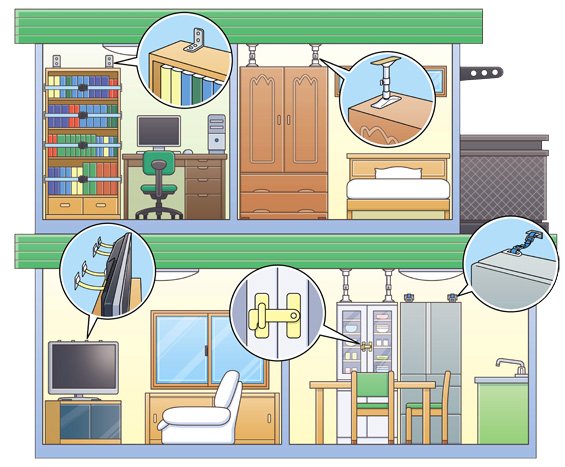
Earthquake-proofing your home
Even if a quake isn’t strong enough to do structural damage, there is still a risk of injury from falling or moving objects. The Tokyo Metropolitan Government estimates up to 50 percent of earthquake injuries can be attributed this. Luckily, Japan has come up with all kinds of doohickeys to keep your stuff in place, most of which are available at your local 100 yen store or home center.
Your first consideration should be properly storing loose items and not placing heavy or dangerous items on high shelves. If you have cabinets storing breakable items or installed in high places, consider putting safety locks on them. Your average child-lock will work just fine or there are simple hook types usually called 開き戸ロック (hirakido rokku) specially designed for ease of access. Glass doors or large mirrors should be covered with an antiscattering film (グラス飛散防止シート / gurasu hisanboushi shiito) to prevent dangerous broken shards.
You’ll also want to secure tall, heavy furniture such as bookshelves with tension poles (突っ張り棒 / tsuppari bou) or L-brackets screwed into the wall if allowed. Smaller furniture can be secured with a variety of anti-slip mats and belts. Things on wheels should be secured with caster cups (キャスターストッパー / kyasutaa sutoppaa).
Hanging light fixtures can also be dangerous if they get swinging, so ensure any pendant lights have fixture chains (フィクスチャチェーン / fikusucha cheen) to keep them in place.
Fire is a major secondary risk after an earthquake, so your home should have fire extinguishers, smoke alarms, and an earthquake-tripped circuit breaker to prevent electrical fires. Also make sure all family members are familiar with the location and operation of the devices.
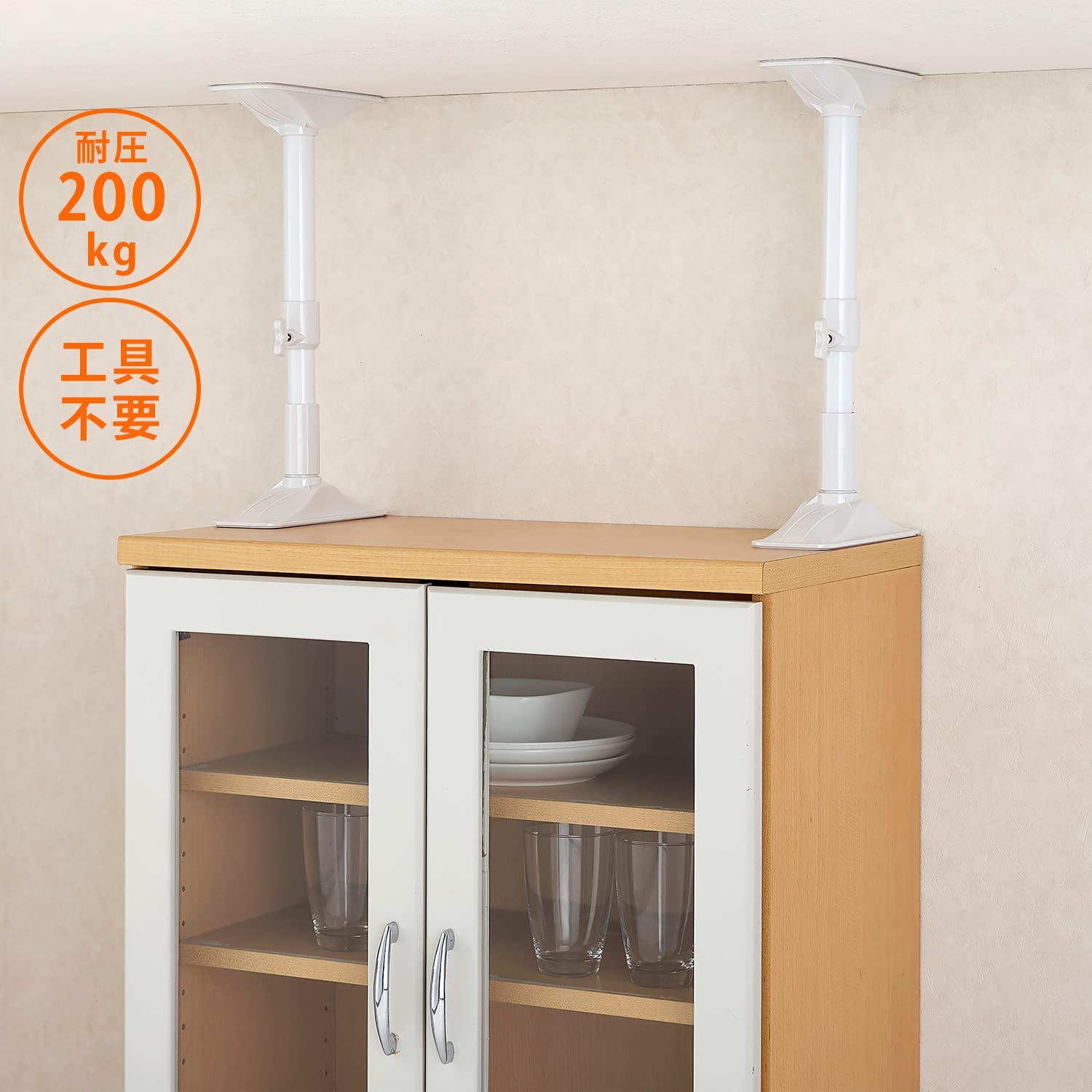
Disaster Prevention Tools & Kit
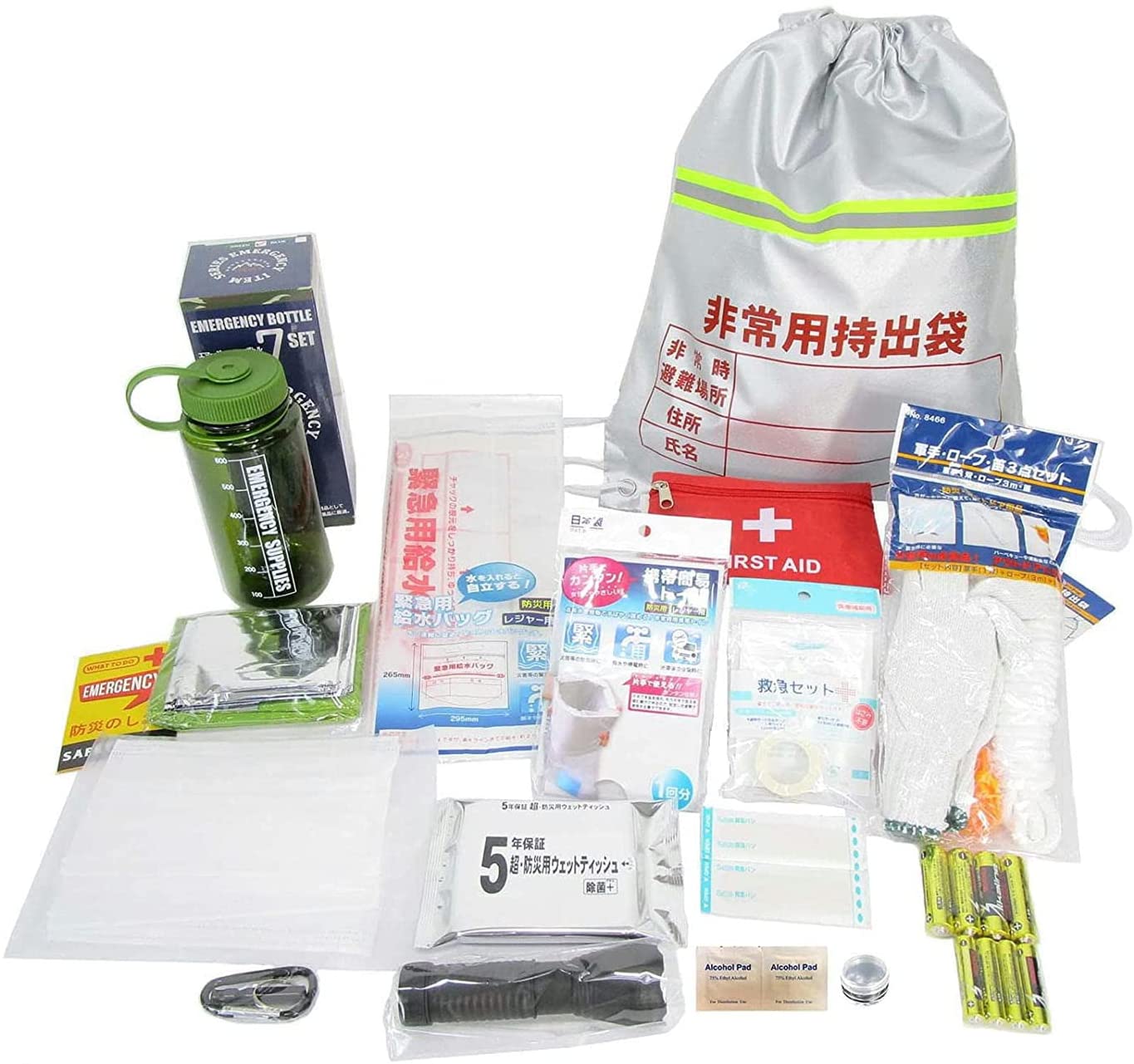 What to have in your earthquake kit
What to have in your earthquake kit
Another important task for disaster preparedness is preparing an emergency bag. This is an easily portable bag filled with necessities in case you have to evacuate.
The Tokyo Metropolitan Government recommends an emergency bag be placed near the main exit or in an outside structure such as a garden shed to be easily accessible even if the building collapses. They recommend including a flashlight, portable radio, helmet or protective hood, work gloves, blanket, batteries, lighter, candles, water, non-perishable food such as instant noodles, a knife, a change of clothes, cash, a copy of your bank book, and a first-aid kit. It’s a long list, but most home centers sell ready-packed kits (防災セット / bousai setto) to make it a bit easier.
Additionally, you may want to include a few days supply of any medications your family needs and copies of your passports and other important documents. An emergency toilet (防災用トイレ / bousaiyou toire or 非常用トイレ / hijouyou toire) also wouldn’t go amiss in the event water supplies are cut off.
Search for Disaster Prevention Kit
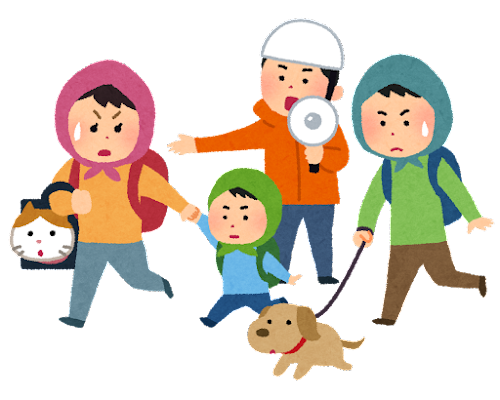 Know your local hazards and evacuation centers
Know your local hazards and evacuation centers
Forewarned is forearmed, as they say. Knowing whether the area you live in is at risk for tsunamis, landslides, or liquefaction should inform your evacuation plans. You can check this information online at the Ministry of Land, Infrastructure and Tourism’s hazard map portal. Unfortunately, the service is only available in Japanese. Another option is to visit your local city hall and ask for a copy of the hazard map (ハザードマップ).
Another important thing to check is the location of your nearest evacuation centers, often a park or school and usually indicated with a green sign with a little running figure. There are actually two different types: an evacuation area (a temporary place to flee from immediate danger) and an evacuation center (a place where you can stay if your home has been deemed unsafe).
You can find the evacuation locations nearest you on Tokyo’s disaster prevention map, which also has up-to-date info on where evacuation warnings have been issued. Be sure to confirm your fastest and safest routes in advance.
Make a disaster plan
There’s no knowing when a major disaster will hit, so be sure to discuss contingency plans with everyone in your household. In addition to making sure everyone is familiar with the evacuation routes and the location of your emergency kit and other important items, discuss a meeting place and a method of contact if your family is separated. People may be stranded at work or school and have difficulty returning home when transportation is disrupted. Likewise, damage to infrastructure and surging demand can put wireless communications out of commission. In that case, you can use NTT East’s free 171 voice message service to let family members know you are safe and where you are. Most mobile service providers offer a similar service.

Landlines are more reliable in the event of wide-scale damage, which is why Tokyo maintains a certain number of public payphones. Make note of where the closest ones to your home and office are located.
 Special considerations for pet owners
Special considerations for pet owners
If you have pets, include their wellbeing in your disaster preparedness plans. Have a few day’s supply of their food and any medications in your emergency kit, as well as an extra leash and a travel toilet set up. In addition to their usual carrier, a large, lightweight, collapsible travel crate is also a wise investment if you plan to bring your companion animal to an evacuation center. Use these items from time to time to help your pet get accustomed to them.
Unfortunately, not all evacuation centers allow pets. It is up to local governments and municipalities to decide if they will allow animals and under what conditions, which means proper guidelines are not always in place. Check with your city office in advance to see if there are any centers in your area that explicitly allow pets. If not, you may want to have a few back-up options in mind, such friends’ homes, pet boarders, or pet-friendly hotels.
And, of course, make sure your pet is microchipped and the registered information is up to date!
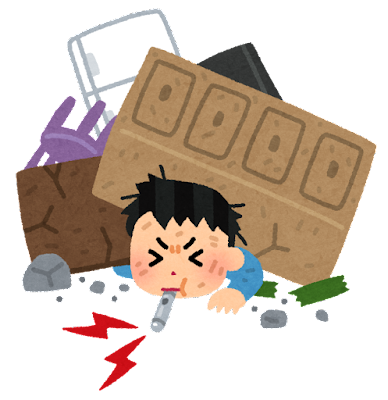
Other helpful information and resources
For even more in-depth information on disaster preparedness, check out the 300-page Tokyo Bousai handbook provided by the city to all residents. An English version can be found here. It actually has some great tips on everything from using everyday items to make survival supplies to emergency first-aid instructions.
Being as it’s the digital age, there are a lot of apps out there to help Tokyo residents manage a disaster. Yurekuru Call is one of the most popular, offering early warnings for earthquakes via push notification. Safety Tips was created by the Japan Tourism Agency as a one-stop multi-lingual app to help keep tourists abreast of any dangerous situations and guide them to safety, but it’s quite handy for expats too.
Well, that’s our brief guide. Any important prep we’ve forgotten? Handy tips from past experience? Take to the socials and let us know! Otherwise, stay safe out there, Tokyo.